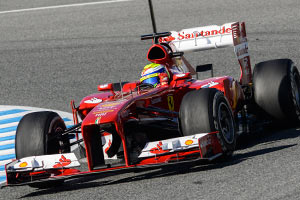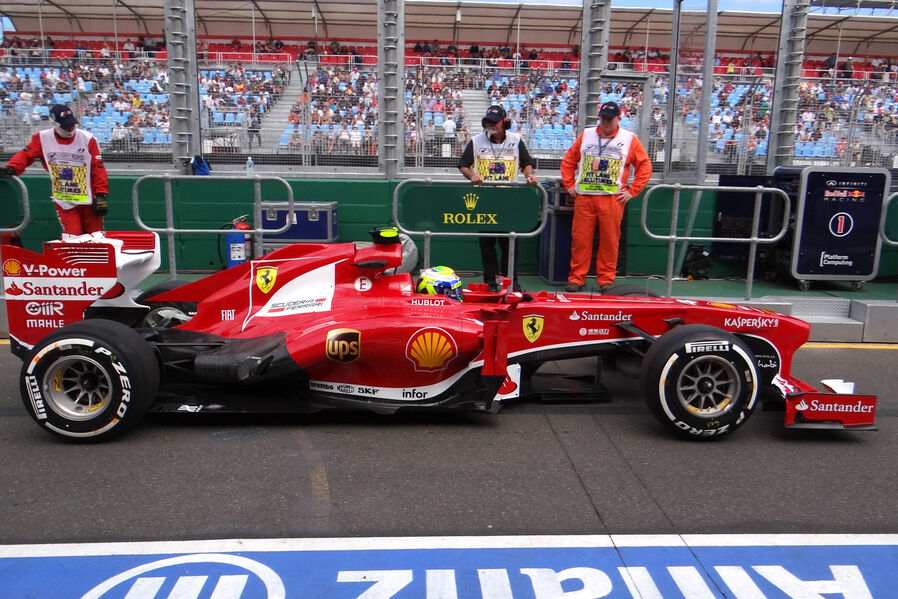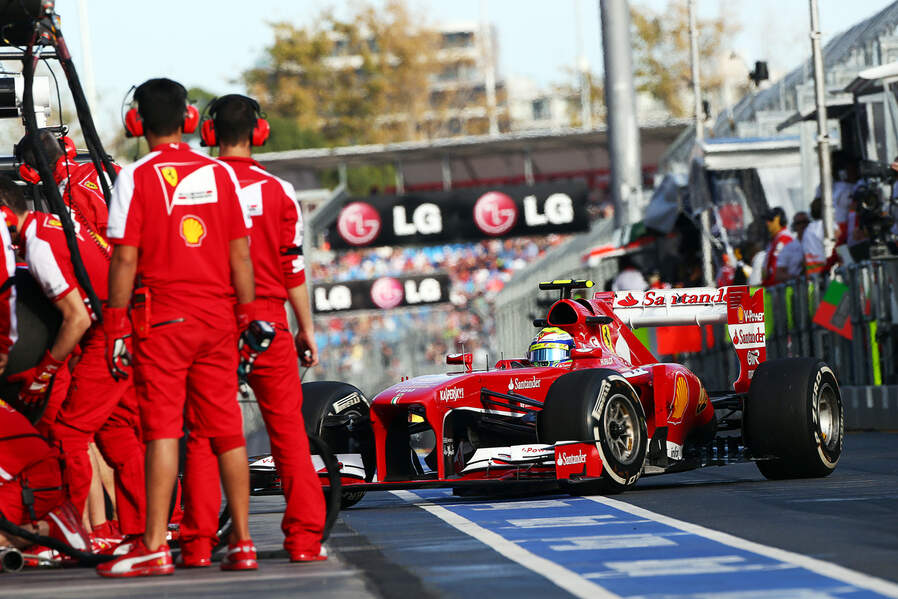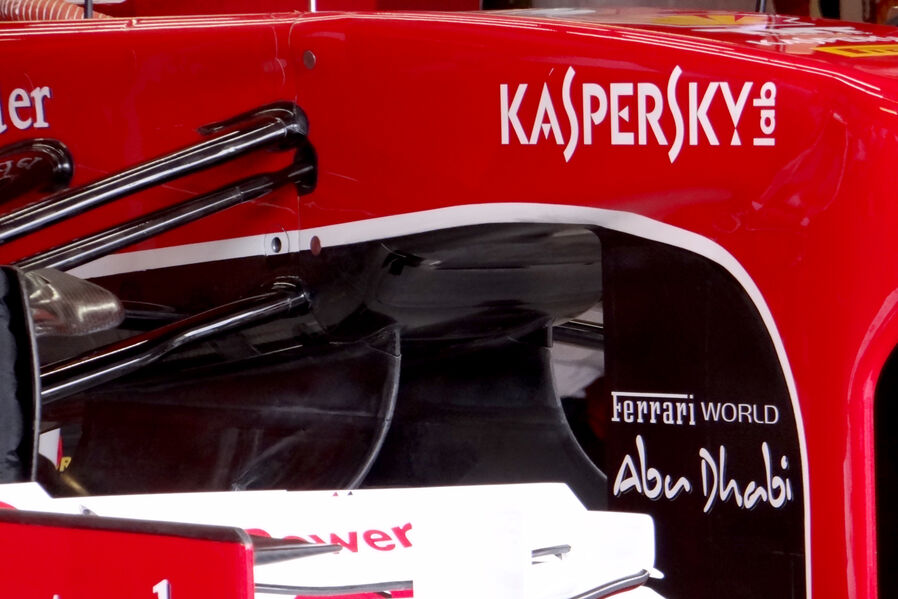Ferrari F138 - bodied driveshaft


The bodied driveshaft is another F1 trend set by Red Bull's Adrian Newey in 2012 and followed by all the top teams - including Ferrari - for 2013. The rules allow for wing profiles (of a limited size and length-thickness ratio) on suspension arms, but not the driveshaft. What Newey did was cleverly locate the key suspension components, with the driveshaft between them, on the same plane. More importantly, they were close enough together that a wing profile for the suspension components could also - legally - cover the driveshaft. The upper half of this drawing shows a longitudinal cross section of the rear end of the new Ferrari. The upper red arrow shows the shape of the wing profile, with the driveshaft near its centre. The lower red arrow indicates its actual location, with one end of the profile covering the wishbone mounting point (1) and the other end covering the trackrod mounting point (2). Note that Ferrari have mounted the rear suspension on a subframe on the rear of the engine (3), rather than directly to the gearbox. The lower half of the drawing shows the positioning of the wing profile from an overhead perspective.
Ferrari F138 - duct under nose section


Like Sauber and Red Bull, Ferrari's new car, the F138, has a duct underneath the nose section of the chassis. But unlike Sauber and Red Bull, Ferrari do not have a further hole on top of the chassis. The destination of the air going into the duct is unclear. The official answer is to cool the cockpit, but the duct could have other functions - it could be used to cool the car's electronics and/or to improve the quality of the airflow in the lower section of the chassis, even though the air doesn't then exit through the top of the nose like it does on Sauber's C32 and Red Bull's RB9.
©Formula1.com





















